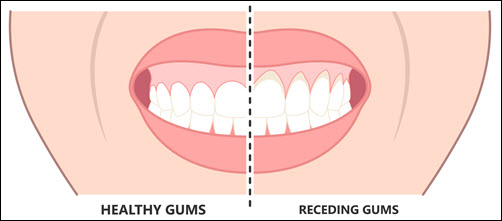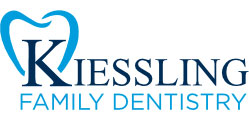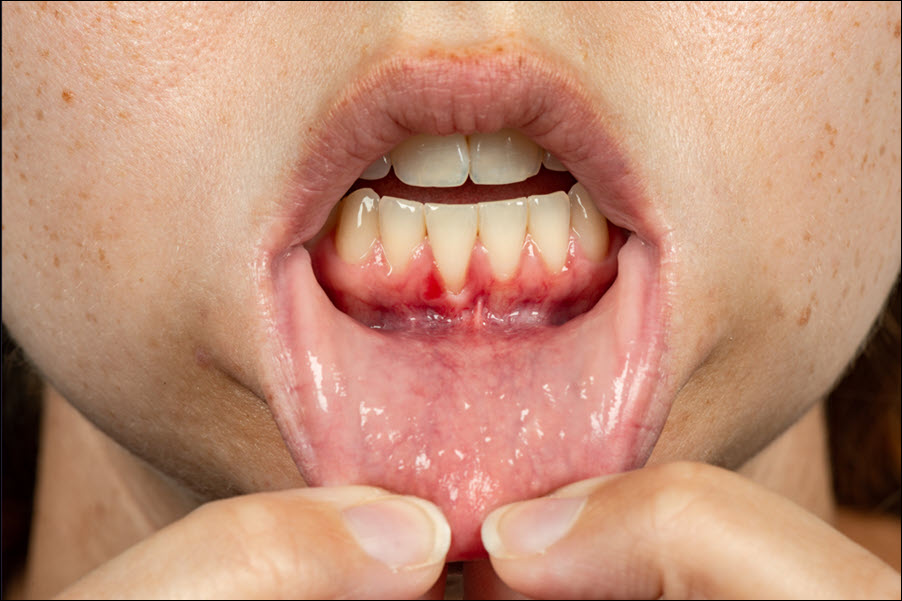Gum Recession and How to Prevent It
Gum recession exposes tooth roots and increases sensitivity to hot, cold, and sweet foods. It occurs when gum tissue pulls back from teeth, leaving roots unprotected. Poor oral hygiene, aggressive brushing, and gum disease increase the risk of recession. Receding gums create gaps where plaque and bacteria accumulate, leading to tooth decay and gum inflammation. Left untreated, gum recession weakens tooth stability and increases the risk of tooth loss. Early prevention strengthens gum attachment and protects tooth roots. Proper brushing, flossing, and regular dental care prevent gum recession and improve gum health. Let’s explore the causes of gum recession and how to prevent it.
Causes of Gum Recession
 Aggressive brushing and poor oral hygiene damage gum tissue and increase recession risk. Brushing too hard with a hard-bristled toothbrush irritates gums and wears down enamel. Gum disease (gingivitis and periodontitis) weakens gum attachment and causes tissue loss. Smoking reduces blood flow to gums, slowing healing and increasing inflammation. Poorly fitted dental work and misaligned teeth create uneven pressure, irritating gums. Teeth grinding (bruxism) increases pressure on teeth and gums, causing tissue breakdown. Hormonal changes during pregnancy and menopause increase gum sensitivity and recession risk. Certain medications reduce saliva flow, increasing dry mouth and gum irritation. Identifying causes early improves treatment success and gum health.
Aggressive brushing and poor oral hygiene damage gum tissue and increase recession risk. Brushing too hard with a hard-bristled toothbrush irritates gums and wears down enamel. Gum disease (gingivitis and periodontitis) weakens gum attachment and causes tissue loss. Smoking reduces blood flow to gums, slowing healing and increasing inflammation. Poorly fitted dental work and misaligned teeth create uneven pressure, irritating gums. Teeth grinding (bruxism) increases pressure on teeth and gums, causing tissue breakdown. Hormonal changes during pregnancy and menopause increase gum sensitivity and recession risk. Certain medications reduce saliva flow, increasing dry mouth and gum irritation. Identifying causes early improves treatment success and gum health.
Proper Brushing Technique to Prevent Gum Damage
Brushing too hard damages gum tissue and increases recession risk. Use a soft-bristled toothbrush and fluoride toothpaste. Hold the toothbrush at a 45-degree angle to the gumline. Use gentle, circular motions to clean all tooth surfaces. Avoid scrubbing back and forth, which irritates gums and wears down enamel. Brush for at least two minutes, twice a day. Clean the tongue and roof of the mouth to reduce bacteria buildup. Replace the toothbrush every three months or when bristles fray. Electric toothbrushes improve plaque removal and reduce gum irritation. Proper brushing strengthens enamel and protects gum tissue. Gentle brushing improves gum health and reduces recession risk.
Flossing to Protect Gum Attachment
Flossing removes plaque and bacteria from between teeth and under the gumline. Use about 18 inches of floss, wrapping it around your middle fingers. Slide the floss between teeth using a gentle back-and-forth motion. Curve the floss into a “C” shape around each tooth and clean under the gumline. Avoid snapping the floss, which damages gum tissue. Water flossers and floss picks provide alternative cleaning methods for tight spaces. Flossing reduces plaque buildup and prevents gum inflammation. Clean gumlines strengthen gum attachment and reduce sensitivity. Consistent flossing improves gum health and reduces the risk of gum recession. Stronger gums increase tooth stability and reduce plaque buildup.
Preventing Gum Disease to Protect Gum Tissue
Gum disease increases the risk of gum recession and tooth loss. Plaque buildup along the gumline causes gingivitis, leading to inflammation and bleeding. If untreated, gingivitis progresses to periodontitis, causing gum recession and bone loss. Regular brushing, flossing, and dental cleanings prevent plaque buildup and gum disease. Antibacterial mouthwash reduces bacteria and gum inflammation. Professional scaling and root planing remove plaque and tartar from deep pockets. Early treatment of gum disease prevents tissue loss and strengthens gum attachment. Healthy gums improve tooth stability and reduce sensitivity. Better gum health reduces recession risk and improves dental strength.
Avoiding Teeth Grinding and Jaw Pressure
Teeth grinding (bruxism) increases pressure on gums and weakens attachment. Stress, poor sleep, and misalignment increase grinding frequency. Wearing a custom night guard reduces grinding pressure and protects gums. Stress management techniques like deep breathing and meditation reduce jaw tension. Orthodontic treatment corrects bite misalignment and reduces uneven pressure on gums. Reducing caffeine and alcohol intake lowers muscle activity and grinding frequency. Strengthened gum attachment increases tooth stability and reduces gum strain. Better jaw alignment protects gum tissue from excessive pressure. Protecting teeth from grinding improves gum health and bite strength. Reduced grinding increases gum resilience and comfort.
Protecting Gums from Tobacco and Alcohol
Smoking and tobacco use weaken gum tissue and increase recession risk. Nicotine reduces blood flow to gums, slowing healing and increasing inflammation. Smoking also increases plaque buildup and gum sensitivity. Quitting smoking improves gum attachment and reduces gum inflammation. Alcohol consumption dries out the mouth and increases bacterial growth. Reduced saliva flow increases plaque buildup and gum irritation. Drinking water after consuming alcohol reduces dryness and improves gum health. Tobacco and alcohol increase the risk of gum disease and tooth loss. Avoiding harmful substances strengthens gum tissue and improves tooth stability. Stronger gums increase overall dental health and comfort.
Regular Dental Checkups for Early Detection
Professional dental checkups detect early signs of gum recession and disease. Dentists measure gum pocket depth to check for tissue loss. Regular cleanings remove plaque and tartar from the gumline. Early detection of gum inflammation improves treatment success and prevents further recession. Professional fluoride treatments strengthen enamel and reduce sensitivity. Dentists recommend deep cleaning (scaling and root planing) for early gum disease. Adjusting poorly fitted dental work improves gum attachment and bite strength. Better professional care reduces gum recession and improves overall dental comfort. Regular dental monitoring improves gum health and reduces treatment costs. Consistent care prevents long-term gum damage and tooth loss.
Improving Overall Oral Hygiene
Consistent brushing, flossing, and mouthwash use protect gum health. Fluoride toothpaste strengthens enamel and reduces gum sensitivity. Antibacterial mouthwash reduces plaque and gum inflammation. Drinking water throughout the day increases saliva production and protects gum tissue. Avoiding sugary and acidic foods reduces plaque buildup and enamel erosion. Better nutrition improves gum tissue strength and healing. Proper hydration supports better gum attachment and reduced sensitivity. Professional cleanings every six months improve plaque control and gum health. Stronger gum attachment increases tooth stability and bite strength. Consistent care improves long-term gum health and smile confidence.
Gum recession increases sensitivity and weakens tooth stability. Poor brushing, gum disease, and grinding increase recession risk. Proper brushing and flossing protect gum tissue and reduce plaque buildup. Quitting smoking and managing stress improve gum health and attachment. Treating early signs of gum disease prevents tissue loss and tooth sensitivity. Professional dental care strengthens gum attachment and improves overall gum health. Protecting gum tissue reduces the risk of cavities and tooth loss. Consistent care strengthens gum resilience and improves dental comfort. Investing in gum health creates a stronger, more confident smile. Healthier gums increase overall dental strength and stability.



